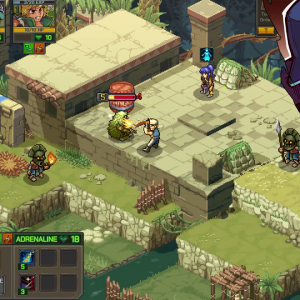Google isn’t afraid to shut down projects when they don’t work.
Google is making a big play in the gaming space, with a new cloud game streaming service called Stadia. It’s far from the first of its kind, but it has insane potential for the future of gaming–at least, once our internet connections are mature enough to keep up.
Stadia, as Google explains, allows you to play AAA titles with high-end PC graphics on just about any platform–your laptop’s browser, your phone, or even your TV through a Chromecast. Google’s servers do the heavy graphical lifting, sending a video stream to your screen while you sit at home with your favorite gamepad or keyboard.
Google is not the first company to provide a service like this–heck, it’s not even the third or fourth–but it is uniquely positioned to provide the best experience yet.
Connection Makes It or Breaks It
The biggest bottleneck to a smooth cloud gaming experience has always been your connection. Your distance from the game server can introduce latency that affects input lag, the speed of your internet connection determines the quality of the video stream, and the reliability of your home network could mean the difference between smooth gameplay and a stuttering mess.
“
Hardcore CS:GO players might be harder to please.
Things have improved a lot since the early days of OnLive and Ouya, and modern services like NVIDIA GeForce Now and Shadow (review) can work quite well, provided the aforementioned network conditions are favorable.
But Google is, first and foremost, a cloud company, and they have more servers and compute power than any of its game streaming competitors could hope to match. That means that, if Google’s done their job, you could experience less latency and better performance with Stadia than other options.
Their multi-GPU scaling is also intriguing, allowing you to boost the graphical fidelity of your game, or play split-screen with your friends without framerate compromises.
Not only that, but Google’s also introducing a host of other features, like state sharing, allowing you to jump into a game right where your friend or favorite streamer left off. Like many of their other ventures, Google has the potential to all but wipe out the competition with their massive resources. And while we don’t know the pricing just yet, Google has a history of subsidizing these things with their advertising business, offering many of their user-facing services for free or cheap.
Google’s Commitment
Unfortunately, Google also has a history of shuttering services without warning after a few years (remember Google Buzz? Or Inbox? Or Allo?). They made a point of stressing their commitment to this project during their keynote, so hopefully they’re all in–but it’s hard to say this early in the game.
More importantly, while cloud gaming is much better than it used to be, it’s not quite as seamless as most companies would like you to think.
Those network requirements can be unforgiving if you’re on a mediocre Wi-Fi network–as I mentioned in my Shadow review, I’ve experienced near-perfect performance as well as unusable stutter, all due to the Wi-Fi network was on–and both of those networks were backed by the same internet speed.
If you’re playing on a wired connection at home, things’ll probably work great (provided you don’t hit your data cap), but the idea of picking up where you left off on your phone at Starbucks is probably a few years off.
Furthermore, while Google can do a lot to make latency more palatable for casual gamers, hardcore CS:GO players might be harder to please. In other words, cloud streaming may very well be the future of gaming–but for many people, it’s probably not going to take over the present.
Whitson Gordon is a writer, gamer, and tech nerd who has been building PCs for ten years. He eats potato chips with chopsticks so he doesn’t get grease on his mechanical keyboard.





















-150x150.jpg)

